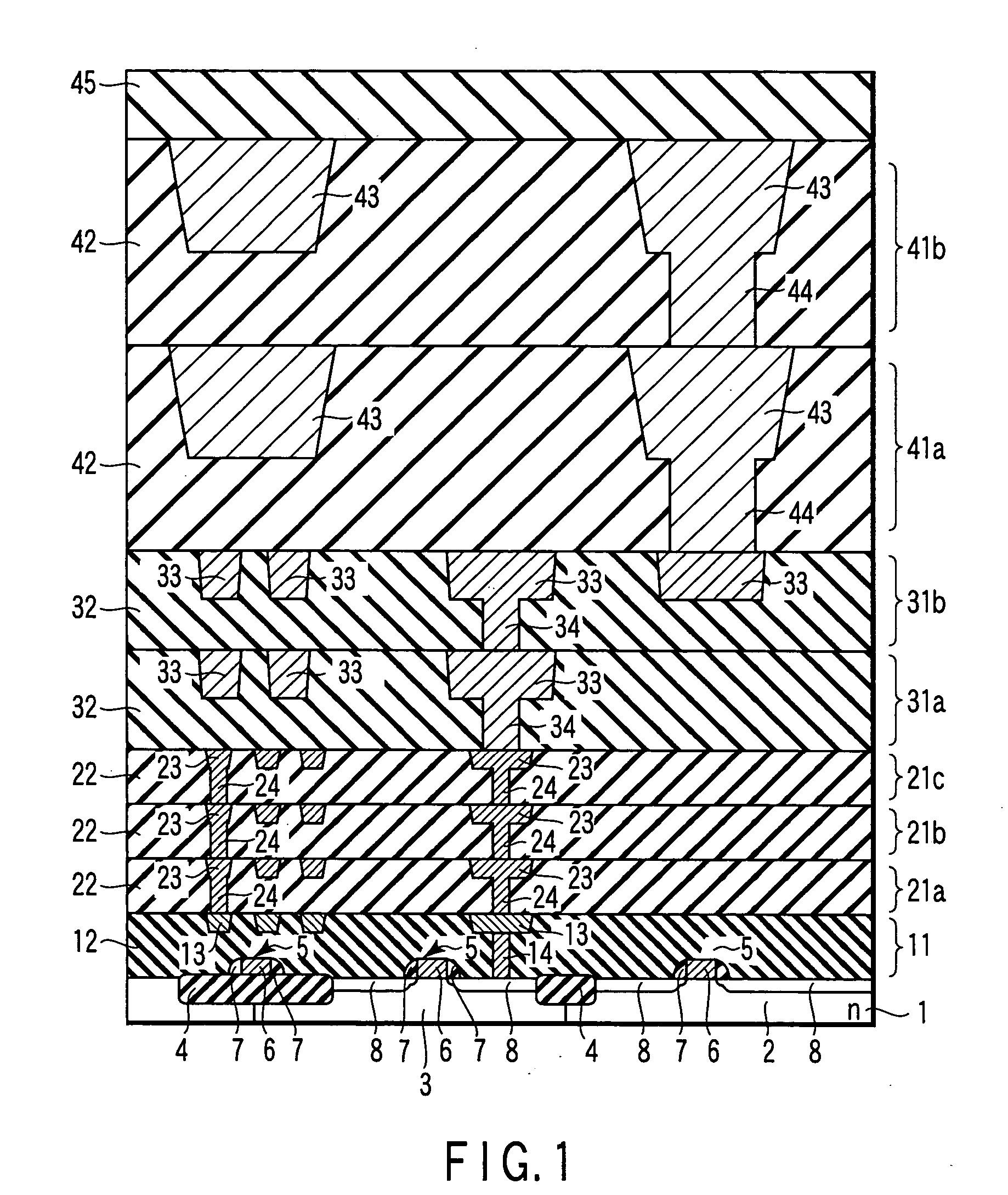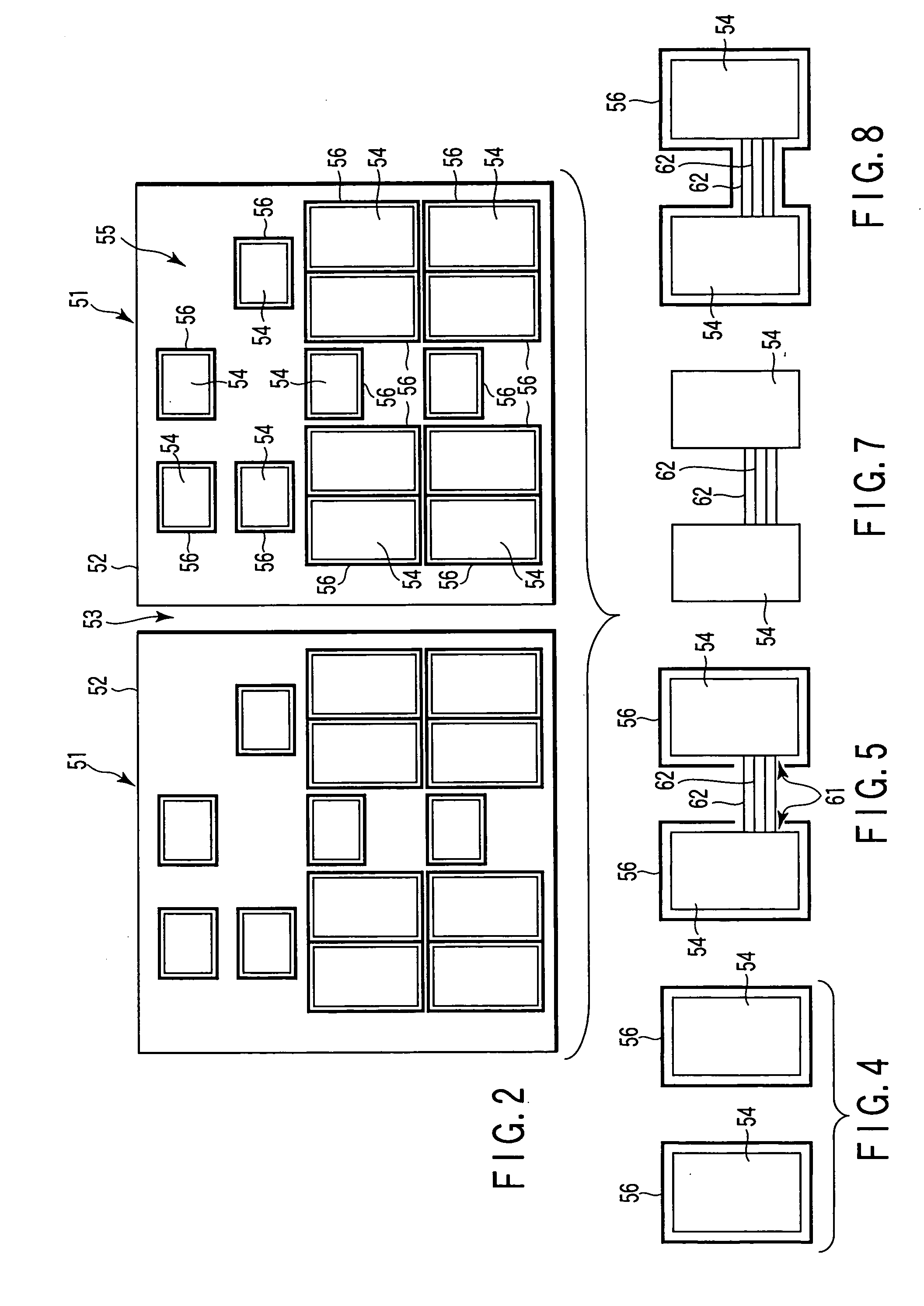Semiconductor device
a technology of semiconductor devices and capacitors, applied in semiconductor devices, semiconductor/solid-state device details, electrical apparatus, etc., can solve the problems of cap film not being formed as desired on each of the low dielectric constant films, cap film tending to incur damage, and subsequent process steps
- Summary
- Abstract
- Description
- Claims
- Application Information
AI Technical Summary
Benefits of technology
Problems solved by technology
Method used
Image
Examples
first embodiment
[0063]FIG. 2 is a plan view schematically showing the construction of a semiconductor device according to a first embodiment of the present invention. As shown in FIG. 2, semiconductor chips 51 (two are shown as an example) are formed on a main surface of the semiconductor substrate 1. Each of the semiconductor chips 51 is surrounded by a fence (chip ring) 52 (element protective member). To be more specific, the fence 52 extends on a plane (horizontal plane) parallel to the main surface of the semiconductor substrate 1 so as to surround continuously the device region (element region) corresponding to the semiconductor chip 51. Also, a dicing line (dicing region) 53 is formed around the semiconductor chip 51.
[0064] Functional circuit blocks 54 are formed within the semiconductor chip 51. Each of the functional circuit blocks 54 performs a properly independent function and corresponds to, for example, the macro (core) of the system LSI (Large Scale Integrated circuit). A boundary reg...
second embodiment
[0074] A second embodiment is employed in combination with the first embodiment. In the second embodiment, the fence 56 is partly discontinuous in the wiring level of a high layer. Alternatively, the fence 56 is not formed in the high layer.
[0075]FIGS. 4 and 5 are plan views each showing schematically the construction of a part of a semiconductor device according to the second embodiment of the present invention. As shown in FIGS. 4 and 5, the semiconductor device comprises, for example, substantially three wiring levels. To be more specific, a second wiring level and a third wiring level are formed successively on a first wiring level constituting the lowermost wiring level. The interlayer insulating film in each of the first and second wiring levels consists of a low-k material. On the other hand, the interlayer insulating film in the third wiring level consists of a non low-k material. It is possible to form the first to third wiring levels as respective first to third wiring le...
third embodiment
[0081] A third embodiment is an application of the second embodiment. In the third embodiment, the fence 56 also surrounds the block connecting wiring 62.
[0082]FIG. 8 is a plan view schematically showing the construction of a semiconductor device according to the third embodiment. As shown in FIG. 8, the fence 56 continuously surrounds collectively the functional circuit blocks 54 connected to each other by the wiring 62 and the block connecting wiring 62 in the third wiring level. The constructions of the first wiring level 63 and the second wiring level 64 remain unchanged from the second embodiment.
[0083] In the semiconductor device according to the third embodiment, it is possible to obtain the same effect as in the second embodiment. Further, the fence 56 does not have an opening, so as to form a closed structure in the third wiring level 65. Therefore, the water and the gas permeating into the interlayer insulating film of the third wiring level 65 can be it is possible to p...
PUM
 Login to View More
Login to View More Abstract
Description
Claims
Application Information
 Login to View More
Login to View More - R&D
- Intellectual Property
- Life Sciences
- Materials
- Tech Scout
- Unparalleled Data Quality
- Higher Quality Content
- 60% Fewer Hallucinations
Browse by: Latest US Patents, China's latest patents, Technical Efficacy Thesaurus, Application Domain, Technology Topic, Popular Technical Reports.
© 2025 PatSnap. All rights reserved.Legal|Privacy policy|Modern Slavery Act Transparency Statement|Sitemap|About US| Contact US: help@patsnap.com



